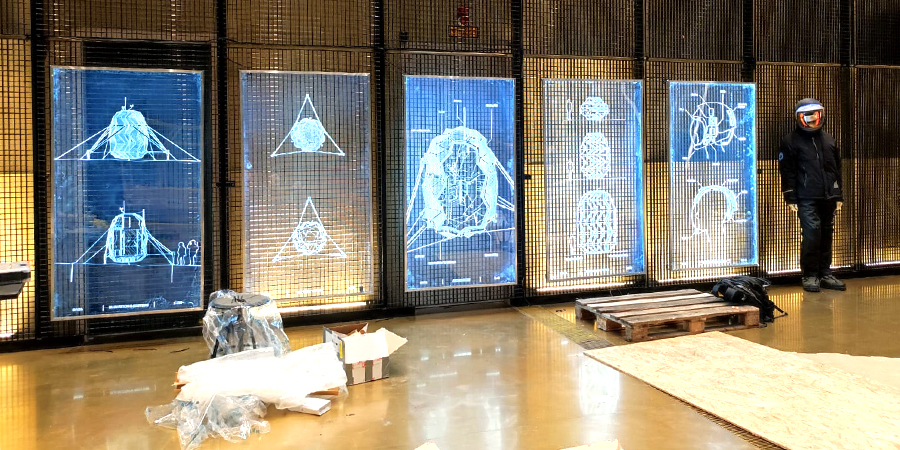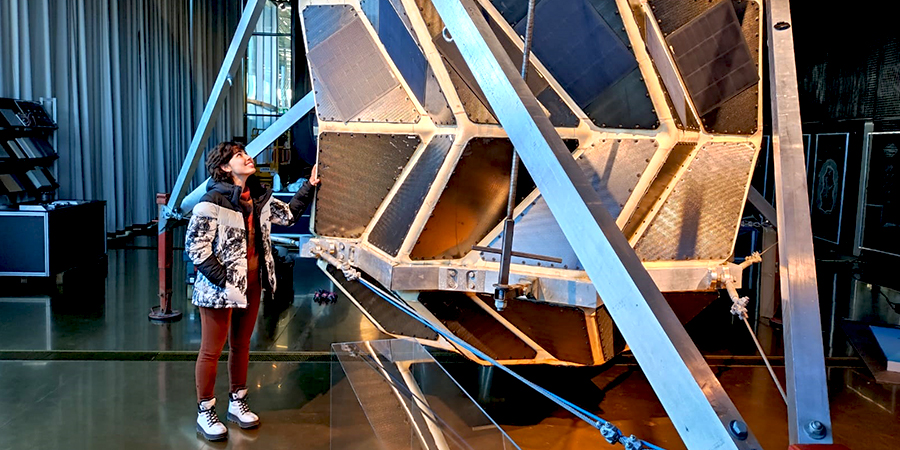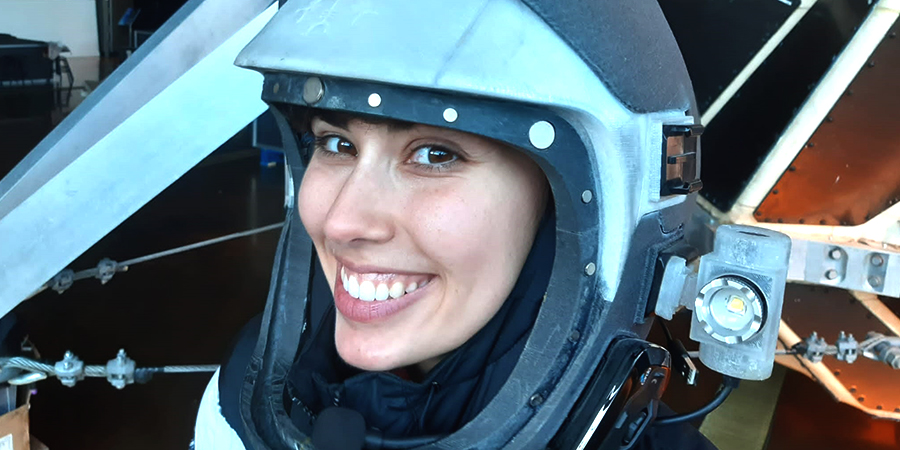- Most viewed
- Last viewed
“Space architecture is a booming sector as trips to space will become longer and more frequent”
Ana Guerrero (Barcelona, 1997) has just returned from Copenhagen after several months setting up the exhibition “A Space Saga”. The exhibition, which is on until early September at the Danish Architecture Center, showcases an expedition to northern Greenland undertaken by space architects Sebastian Aristotelis and Karl-Johan Sørensen to test their prototype space habitat named LUNARK. The sixty-day mission served to test key factors that determine human habitability in an extra-planetary environment, such as prolonged isolation in confined spaces and living in extreme conditions. We talked to Ana Guerrero, who has just obtained the International Double Degree in Architecture from UIC Barcelona and the University of Belgrano (Argentina) and who, following her experience at the studio SAGA Space Architects, will shortly start working on an astronomical observatory based in the Pyrenees.
1. You collaborated on developing and setting up the “A Space Saga” exhibition, which has been on display at the Danish Architecture Center since mid-February. What is the aim of this exhibition and what can will visitors find there?
The exhibition aims to bring us closer to the world of space, turning what we often see as something very distant into a reality. It is proof that hard work and motivation will get you places, including outer space. SAGA Space Architects, the studio behind the project, is a great example of this. What began as a group of friends with common interests is today an emerging company and already an international benchmark in the field of space architecture. The exhibition highlights the huge importance of space exploration in improving our lives on this planet.

2. What relevance does space architecture have in the debate on contemporary architecture?
Space architecture is a booming sector due to forecasts of a new era of space exploration, in which space travel will become longer and more frequent. Space will no longer be a realm limited to highly trained astronauts, space tourism will become more and more commonplace. Likewise, the idea of a lunar base as logistical and technical support for longer and more ambitious journeys is fairly certain, which is why architects play an important role in guaranteeing the spatial quality of this type of project. Architects will have an essential role to play in the feasibility of these plans and studies.
3. Can the prospect of living in space also contribute to raising awareness about life on this planet, which is increasingly threatened by climate change?
Absolutely. All this research feeds back into the knowledge we already have about Planet Earth. The development of closed-loop reuse and recycling technologies can substantially benefit terrestrial systems. Well-being research in space missions is fully applicable to well-being here on Earth, and not only that, the relevance it acquires in space is crucial to be transferred to our planet, where we often lose sight of what we really need and what is good for us.
On the other hand, each step forward in understanding the complexity of space travel and exploration brings us closer to our origins. Not only can it give us a better understanding of our roots, who we are and where we come from, but it also connects us more with nature and raises our awareness of the importance of its preservation.
4. What did your work at SAGA Space Architects involve?
I joined the studio in February last year while I was finishing the last semester of my degree. Soon after, they offered me the chance to collaborate in the exhibition and help with the whole process of its development and subsequent installation. I participated in the design and construction of all the objects that make up the exhibition, as well as the display elements, including podiums, panels and prints.

5. The studio is made up of an interdisciplinary team of architects and engineers. What are their main lines of work and research?
The studio's philosophy is based on the “Terra-Tech” concept, which raises awareness of the way our planet stimulates us and allows us to live a healthy and balanced life. And this philosophy is transferred to space to allow humans to live there.
Through projects such as the expedition to Greenland, determining factors for this habitability are tested, ranging from isolation in confined spaces, coexistence with colleagues in extreme conditions or the lack of variation in the environment (light, temperature, smells, etc.). All of this provides a series of key conclusions for research in the field of space architecture.
6. On a personal level, how do you rate your experience in Copenhagen over the last few months?
Incredibly enriching. While working on the exhibition, I had the chance to move around the city and interact with companies from all over Denmark in search of the best solutions for the project. Danish culture has given me a new point of view and allowed me to break with many prejudices and pre-established ideas, that we all inevitably have in our minds. They were months of total immersion in which I was able to learn Danish and connect with people in a similar situation to mine.

7. Before your time in Denmark, you lived in Buenos Aires where you studied an International Double Degree between UIC Barcelona and the University of Belgrano. What led you to finish your Architecture studies in Argentina?
I have always loved travelling and discovering new places and cultures. My Erasmus semester in Italy helped me decide to take the opportunity to finish my studies in Argentina, bearing in mind the added value that experiences abroad bring both on a personal and professional level. Completing the agreement with the University of Belgrano meant I was able to obtain two degrees, the Spanish and the Argentinean, so now I can work as an architect both in Europe and in Argentina without having to worry about validating the degree.
An International Double Degree adds huge value to your CV. It shows that you have received a broad education and that you are daring enough to take on challenges outside your comfort zone. These are things that employers look for when you are competing for a job with many other highly qualified candidates, and that perhaps serve to tip the balance between two very similar CVs. On the other hand, the most important thing for me is that it opens your mind, helps you to broaden and consolidate some of the knowledge you already have and allows you to expand your network.
8. And after Denmark, what's the next step?
Studying architecture has helped me learn to adapt and acquire interdisciplinary knowledge in many fields, so I'm not afraid to take on new challenges to continue exploring and discovering who I am.
For now I will start working as co-director of an astronomical observatory in the Pyrenees, in charge of managing and carrying out all the projects and activities they are working on, both in terms of dissemination and research. The idea is to incorporate an architectural point of view, which is generally unknown by visitors to such observatories. In order to do this, I'm getting more training in astronomy and gaining a better understanding of the conditions that make realistic and higher quality spatial architecture possible. I am very excited about this project and it will allow me to continue to gain experience in the field of space architecture, which I have always been passionate about.